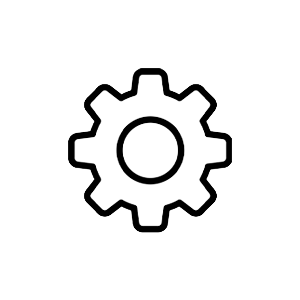How Ancient Egyptians Measured Time and Their Symbols of Power
24/05/2025 06:53
The civilization of ancient Egypt stands as a testament to humanity’s enduring quest to understand the cosmos, organize society, and establish divine authority. Central to their worldview was a profound focus on order, harmony, and the divine right of rulers, which was reflected in their sophisticated methods of measuring time and their rich array of symbols of power. Exploring how they tracked celestial cycles and embodied authority through symbols offers a window into their complex culture and spiritual beliefs.
Table of Contents
- Foundations of Time Measurement in Ancient Egypt
- Instruments and Methods of Measuring Time
- Symbols of Power in Ancient Egypt
- The Eye of Horus as a Symbol of Measurement and Power
- Non-Obvious Aspects of Egyptian Time and Power
- Interconnection Between Time Measurement and Symbols of Power
- Legacy and Modern Relevance
Foundations of Time Measurement in Ancient Egypt
The ancient Egyptians’ approach to time was deeply rooted in the natural environment, particularly the predictable flooding cycle of the Nile River. These annual inundations, crucial for agriculture, served as a seasonal marker that influenced their calendar development. Their need to coordinate farming, religious festivals, and administrative activities fostered innovations in timekeeping that combined astronomical observations with practical needs.
They developed both lunar and solar calendars. The lunar calendar, based on the cycles of the moon, was primarily used for religious festivals, while the solar calendar, aligned with the sun’s journey through the sky, organized civil and agricultural activities. This dual system allowed them to synchronize spiritual and practical life seamlessly.
Celestial events such as solstices and heliacal risings of Sirius (Sopdet) played a vital role in their timekeeping. The heliacal rising of Sirius, for instance, marked the start of the new year and was associated with the goddess Isis, symbolizing renewal and divine order. These astronomical phenomena were integrated into both their religious rituals and administrative calendars, demonstrating their sophisticated understanding of celestial cycles.
Instruments and Methods of Measuring Time
The ancient Egyptians employed various tools to measure time during their daily activities and religious ceremonies. Sundials, often simple shadow clocks, used the position of the sun’s shadow cast by a vertical stick or obelisk to estimate the time of day. These devices required precise placement and understanding of shadow behavior, reflecting their practical engineering skills.
Celestial observations extended beyond simple instruments. Astronomers tracked stars and planetary movements to determine the best times for rituals or agricultural activities. Their knowledge of the night sky was so advanced that they aligned temples and pyramids with specific celestial events. For example, the Karnak Temple complex was oriented to mark the solstice sunrise, illustrating an integration of architecture and astronomy that served as a sophisticated timekeeping system.
These alignments and observations allowed them to create a calendar system that was both practical and religiously significant, reinforcing their concept of divine order manifesting in cosmic cycles.
Symbols of Power in Ancient Egypt
Symbols and artifacts played a central role in asserting the divine authority of the pharaohs. Crowns such as the White Crown of Upper Egypt and the Red Crown of Lower Egypt signified rulership over different regions, and their combination in the double crown symbolized unification and sovereignty. Scepters and elaborate regalia conveyed authority and divine endorsement.
Among these symbols, the Eye of Horus stands out as a powerful emblem of protection, health, and royal legitimacy. Originating from a myth involving Horus, the falcon-headed god, it symbolized divine watchfulness and was often used as an amulet for protection against evil. Its intricate design, often seen in jewelry and temple carvings, embodied both spiritual and political authority.
Other symbols such as the Uraeus serpent and the crook and flail further reinforced the divine right of the ruler, linking their authority directly to cosmic and divine forces. These symbols acted as visual assertions of power that transcended individual rulers, embodying the divine order they sought to maintain.
The Eye of Horus as a Symbol of Measurement and Power
The myth of Horus involves a fierce battle with Set, after which Horus’s eye was injured and later restored, symbolizing healing, restoration, and the triumph of order over chaos. This narrative underpins the Eye of Horus as a symbol of protection and divine legitimacy—attributes essential for maintaining societal order and royal authority.
Hieroglyphically, the Eye of Horus represented mathematical precision and completeness. Ancient Egyptians used it in their numerology system to denote fractional parts, highlighting its connection to measurement and accuracy—a reflection of their broader pursuit of cosmic and temporal order.
Today, the Eye of Horus continues to be a powerful symbol, often associated with health, protection, and spiritual safeguarding. Its enduring presence demonstrates how ancient symbols can bridge past and present, embodying principles of balance, wholeness, and divine authority. For those interested in the symbolic richness of Egyptian mythology, exploring modern interpretations can be enlightening, such as the Egyptian mythology inspired reels that draw upon these themes.
Non-Obvious Aspects of Egyptian Time and Power
The Egyptians’ technological ingenuity extended to their use of materials for recording time and symbols. They created black ink from burned wood and mixed it with gum arabic, allowing for durable hieroglyphic inscriptions that preserved their understanding of cosmic cycles and divine authority over millennia.
Their concept of divine order extended beyond earthly life to include their cosmology. They believed the universe was a reflection of divine harmony, which was maintained through precise observation of celestial phenomena and architectural alignments. This worldview is exemplified by the meticulous design of temples like Karnak, which are aligned with the solstices and star risings, illustrating their deep integration of astronomy into religious practice.
The architectural precision of these monuments demonstrates a sophisticated understanding of celestial mechanics, allowing them to create structures that serve both religious and astronomical purposes—functional tools that reinforced their belief in a cosmos governed by divine laws.
Interconnection Between Time Measurement and Symbols of Power
Accurate timekeeping was essential to legitimize the divine authority of the pharaohs. By aligning their monuments and rituals with celestial events, rulers demonstrated their divine right to govern in harmony with cosmic laws. The precise measurement of time reinforced their role as intermediaries between gods and humans, ensuring societal stability.
Symbols like the Eye of Horus served a dual purpose: they protected the ruler and validated their divine right. The mythological narrative of Horus’s restored eye symbolized order and healing, reinforcing the idea that the pharaoh’s authority was sanctioned by divine forces.
The integration of astronomy, architecture, and symbolism created a comprehensive portrayal of cosmic order—an enduring legacy that continued to influence subsequent cultures, from Greece to Rome and beyond.
Legacy of Ancient Egyptian Timekeeping and Symbols of Power
The conceptual frameworks established by the Egyptians continue to resonate today. Their ideas about cosmic order and divine authority influenced later civilizations’ approaches to astronomy, architecture, and governance. The enduring symbolism of the Eye of Horus exemplifies how ancient symbols can evolve into universal representations of health, protection, and spiritual wholeness.
Modern interest in Egyptian mythology and symbolism often reflects a fascination with their sophisticated understanding of time and divine sovereignty. From contemporary art to spiritual practices, their legacy offers valuable insights into the enduring human pursuit of harmony between the material and divine realms.
“The ancient Egyptians’ ability to measure time and embody divine power through symbols like the Eye of Horus underscores a universal truth: humanity’s quest for order and understanding is timeless.”










